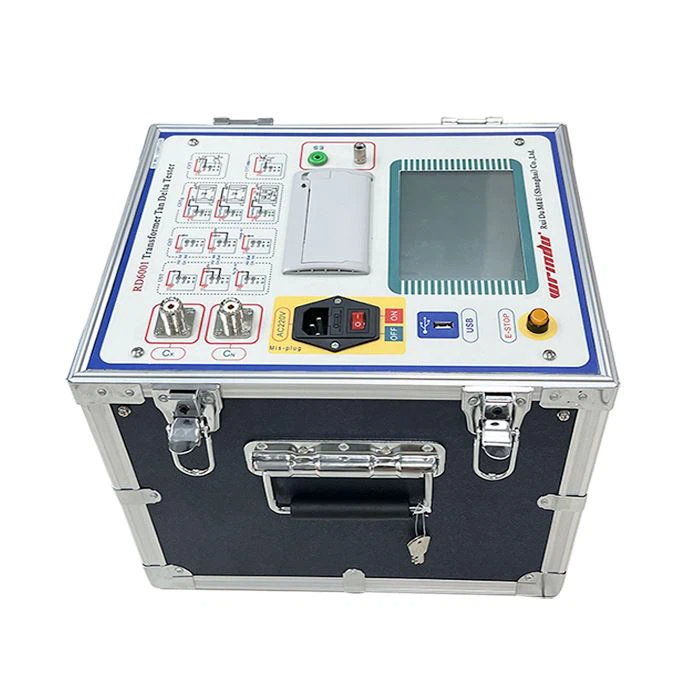Anti-interference multi-frequency dielectric loss tester-power transformer dielectric loss factor test plan
Anti-interference multi-frequency dielectric loss tester is a high-precision testing instrument suitable for testing the dielectric loss tangent and capacitance of various high-voltage power equipment. Integrated structure, built-in dielectric loss test bridge, variable frequency voltage regulator power supply, step-up transformer and SF6 high stability standard capacitor.

A new method of dielectric loss factor tanδ measurement—digital measurement
1) Digital automatic balancing bridge, which still uses the principle of zero value comparison method, but uses a transformer proportional hip instead of an ordinary impedance proportional arm, and uses computer control and processing; thereby achieving automatic balancing and measurement.
2) Real part and imaginary part measurement method: It is a fully automatic measurement bridge developed based on the real part and imaginary part separation method. The vector voltmeter connected to the standard capacitor and the test channel respectively converts the flowing current. is the voltage, and then divide the obtained voltage into the real part and the imaginary part. Use a microcomputer to analyze and calculate these data to obtain the capacitance Cx and tanδ.
3) Digital sampling waveform analysis system: It is an intelligent system that consists of two parts. One is the sampling system, which is responsible for converting the continuous signals of voltage and current on the test sample into discrete digital quantities; the other is data processing. The system, mainly composed of computers, performs Fast Fourier Transform (FFT) on the sampled voltage and current signals to obtain the amplitude and phase of the fundamental wave component of the signal, and finally obtains the tanδ value and the capacitance value of the sample.
4) Portable measuring instrument (phase difference method): It uses the phase method (or square wave shaping method) to calculate tan δ from the angle between the voltage applied to the sample and the current flowing through the sample. The voltage and current signals obtained from the test sample are filtered, limited amplified, and zero-crossing comparison circuits are called square wave signals. Finally, they are transformed into behavioral pulses through the XOR gate. The phase pulse is filled in after passing through the AND gate. The standard pulse is finally sent to the microcontroller for counting, processing and display. The system also takes measures in signal extraction, zero point drift and quantization error to make the measurement more accurate.
Power transformer dielectric loss factor test plan
1. Test conditions
This test should be carried out in good weather, with the temperature of the sample and the environment not lower than +5°C and the relative air humidity not greater than 80%.
2. Test preparation
Before testing, the insulation resistance between each electrode of the test sample should be measured. If necessary, the surface of the test sample (such as the outer porcelain sleeve or the small porcelain sleeve of the capacitor sleeve, the secondary terminal board, etc.) can be cleaned or dried. Understand recent test results on the electrical and chemical properties of oil-filled power equipment insulating oils, including the tan delta of the oil.
Since the shell of the transformer is directly grounded, the AC bridge reverse connection method (or other instruments such as M-type dielectric tester) is used for on-site measurement. In order to avoid measurement errors caused by winding inductance and excitation loss, each phase of the measuring winding must be short-circuited during the test, and each phase of the non-measuring winding must be short-circuited and grounded (shielded when using an M-type dielectric tester).
3. Analysis and judgment of test results
4. During overhaul and handover, the tan δ of the transformer shall not be greater than 1.3 times the factory test value when compared at the same temperature. Comparing preventive tests over the years, the value should not change significantly. Overhaul and preventive test results shall be carried out in accordance with DL/T596. Comprehensive judgment.




